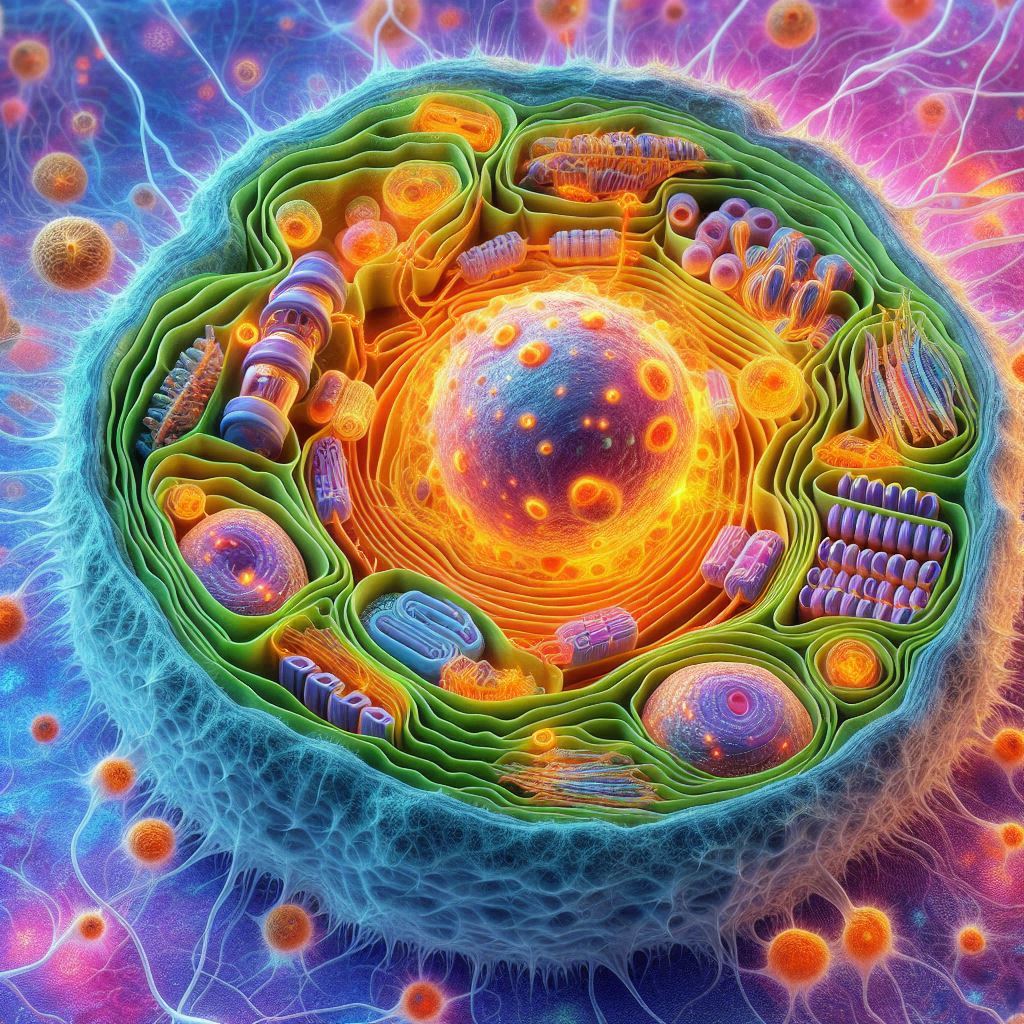The Amazing World Inside You: Exploring the Cell
The Cell: The Building Blocks of Life
Have you ever wondered how your body works, down to the tiniest level? Whether you’re breathing, thinking, or moving, it all starts with something incredibly small: cells. Think of cells as the building blocks that make up every part of our body, just like how bricks form the structure of a house.
What Is a Cell?
At its simplest, a cell is the smallest unit of life. All living things, from the tiniest bacteria to the largest animals, are made up of cells. Some creatures, like bacteria, are made of just one cell, while others, like humans, are made of trillions. But no matter the size, all cells have certain things in common. You can think of a cell like a mini-city, with different parts working together to keep everything running smoothly.
The Cell Membrane: The Security Gate
Imagine that every cell in your body is like a castle, and every castle needs walls for protection. The cell membrane is that wall. But it’s more than just a barrier—it’s like a security gate. It controls what comes in and goes out of the cell. Nutrients and oxygen are allowed inside, while harmful substances or waste are kept out or removed.
The Nucleus: The Control Center
Now, every city or castle needs a leader, right? In the cell, that leader is the nucleus. It’s like the brain of the cell. Inside the nucleus is the cell’s DNA—this is the special code that contains all the instructions for how the cell works. The DNA tells the cell how to grow, what job to do, and how to divide to create more cells. It’s like a blueprint that guides everything.
Cytoplasm: The Cell’s Workspace
The cytoplasm is the jelly-like fluid that fills the inside of the cell. Imagine it as the land and water in a city where all the activity happens. The other parts of the cell float within the cytoplasm, and it provides a space where the cell can do its work.
Mitochondria: The Power Plants
Have you ever wondered where your body gets the energy to keep going? That’s thanks to the mitochondria, often called the “powerhouses” of the cell. These little structures take the food you eat and turn it into energy that the cell can use. It’s like a power plant that keeps the lights on in a city. The more energy a cell needs, the more mitochondria it has. For example, muscle cells, which do a lot of work, have a lot of mitochondria.
Ribosomes: The Protein Factory
Proteins are the building materials for your body—they help build muscle, repair tissues, and support all sorts of functions. Ribosomes are tiny factories in the cell that create proteins. They take instructions from the nucleus (remember the DNA?) and use them to build the proteins the cell needs. It’s like a construction site where workers (ribosomes) use a blueprint (DNA) to build the cell’s structures.
Endoplasmic Reticulum (ER): The Delivery System
If proteins are made in the ribosomes, they need a way to move around the cell, right? That’s where the endoplasmic reticulum (ER) comes in. There are two types of ER: rough and smooth. The rough ER has ribosomes on it and helps transport the proteins they make. The smooth ER doesn’t have ribosomes but helps make other important molecules like fats. Think of the ER as the cell’s postal service, packaging and sending things where they need to go.
Golgi Apparatus: The Packaging Center
After the proteins are made and transported, they need to be prepared for their final destination. That’s the job of the Golgi apparatus. It’s like a packaging center that prepares and ships out proteins and other important molecules to where they’re needed inside or outside the cell.
Lysosomes: The Cleanup Crew
No city would function well without a garbage collection service. In the cell, the lysosomes are the cleanup crew. They break down waste, old cell parts, and other unwanted materials, so the cell stays healthy. You can think of them like recycling centers, making sure the cell doesn’t get cluttered.
Why Are Cells Important?
Cells are more than just tiny blobs floating around inside us—they’re the reason we’re alive! They take in nutrients, create energy, remove waste, and even help us heal when we get hurt. Cells also work together to form tissues (like muscle or skin), which then form organs (like your heart or lungs), and those organs keep your body functioning. It’s like teamwork on a massive scale, with each cell playing a vital role in keeping you alive and healthy.
At The End
The cell may be small, but it’s full of fascinating parts that work together to keep us alive. Whether it’s producing energy, building proteins, or cleaning up waste, every part of the cell has a job to do. Next time you think about your body, remember that it all starts with the amazing cell—our own little city inside us!
